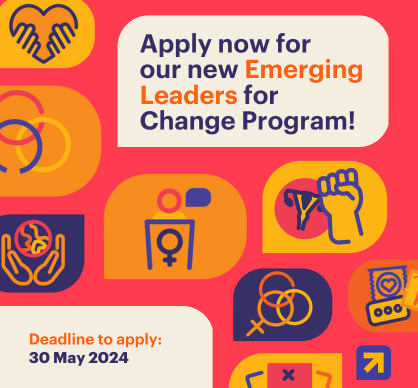Africa is home to approximately two-thirds of the global population living with HIV and— despite a decline in HIV infection rates and AIDS mortality— the epidemic continues to take a toll across the continent. At the same time, Africa is also home to 15 of the 20 countries with the highest prevalence rates of child marriage. Niger, Chad, and the Central African Republic top the list of child marriage “hot spots” with 75, 68, and 68 percent, respectively, of women who married before the age of 18. It is no coincidence that high rates of child marriage correlate with high rates of HIV infection in many countries.
In the worst hit countries, girls aged 15 to17 have four times the rates of HIV infection compared to boys of the same age. In Eastern and Southern Africa, girls account for more than 80 percent of all new HIV infections among adolescents; approximately 7,000 girls between 15 and 24 years-old become HIV-positive every week. Several factors increase the risk of infection for girls; however, these factors are exacerbated when adolescents become married. The age disparity, the power imbalance in relationships, social isolation, the frequency of unprotected sex, intimate partner violence, and forced sex all compound the risk of HIV infection for married adolescents. Existing data from studies conducted in Zambia and Kenya indicate that married adolescents have higher rates of HIV infection compared with unmarried adolescents. According to the United Nations Population Fund, in Zimbabwe, the prevalence of HIV is 6 percent among unmarried female youth aged 15 to 24, compared with 14 percent of those who are married.
Of course, child marriage is not the only factor driving high rates of HIV infection in Africa, but we know there is a close link between child marriage and the spread of HIV in a number of countries. Yet despite this close link, there is a disconnect in terms of how research, policies, laws, and programs respond to these problems. HIV and child marriage interventions are hardly integrated or leveraged to maximize better outcomes. While there has been a strong global response to the HIV epidemic over the past three decades, this has been not the case for the issue of child marriage. Policies and programs for both have developed at different times, pace, and intensity. In addition, while the HIV/AIDS crisis has been seen as serious global threat, the international response and focus have largely taken a public health approach rather than dealing with stigma, rights, criminalization and the other social issues related to the disease.

Thankfully, this is gradually shifting to give room for more integrated and comprehensive strategies and programs. Strong partnerships are beginning to emerge with other sectors and issues, and new research to ground the link between HIV and child marriage is also being generated. For example, the African Union recently conducted a study on the linkages between child marriage and HIV, and will be launching it next week at the International AIDS Conference in Durban, South Africa. Research from the Center for Law and Society at the University of Cape Town (a Ford Foundation partner) on the current disconnects between sexual and reproductive health laws and policies in Southern Africa as they affect child marriage and HIV will also be presented at the conference.
Ford’s approach to tackling the HIV epidemic is rooted in better understanding and addressing the intersections of HIV with sexual and reproductive health and rights, sexual and gender-based violence, sexual orientation, and gender identity and expression, and the criminalization of individuals based on their identity, behavior, or status. We are now poised to bridge the gap between HIV and child marriage by working with our partners to conduct research, strengthen policies and laws, sharpen the analysis on the connections between HIV and child marriage, and promote partnerships between child marriage and HIV communities.
Next week’s International AIDS Conference provides a unique opportunity to promote these issues with the global AIDS community. Girls Not Brides, a longtime Ford Foundation partner, will host a discussion on how and why we need to design programs and policies for adolescent girls that take both HIV and child marriage into account. The Ford Foundation will also partner with the African Union Commission to host a high-level dialogue with government leaders from several African countries on the impact of child marriage on HIV infection. Specifically, the continued practice of child marriage in many parts of Africa as well as the HIV/AIDS crisis have serious consequences for the region’s ability to realize its demographic dividend— a healthy youth population that will be one of the largest in the next couple decades. Indeed, Africa’s future economic growth and development will increasingly rely on its people and its ability to harnesses the potential of its growing youth population. In fact, the African Union is already realizing this and working to develop a more comprehensive continent-wide strategy on child marriage that will strengthen partnerships with civil society and incorporate HIV, religious, and cultural factors that impact children and families.
There has been important and significant progress toward ending child marriage. The United Nations Sustainable Development Goals include a specific target to end all harmful practices, including child marriage by 2030, and several African countries including Gambia, Malawi and Zimbabwe have raised the legal age of marriage to 18. In less than two years, the AU’s pan-African Campaign to End Child Marriage has been launched in 14 countries. However, there is a lot more to be done. And understanding how child marriage impacts the HIV/AIDS crisis is a critical part of creating solutions and policies that can address both problems.


